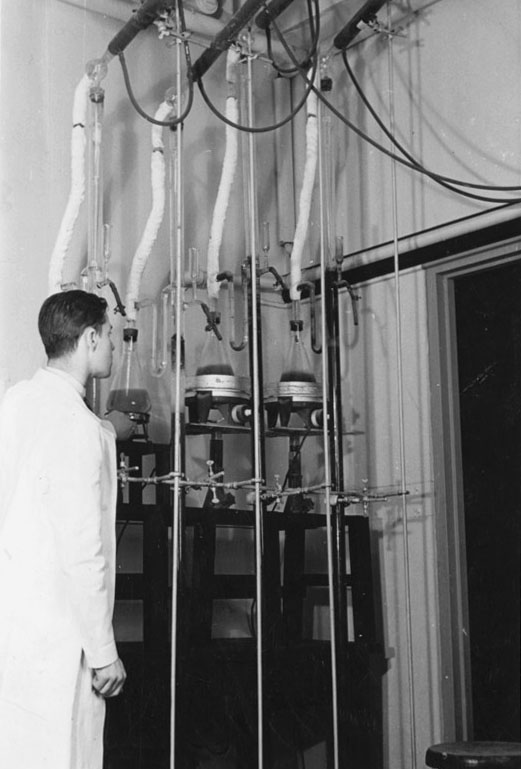From 1911 to 1934, the Bureau of Social Hygiene funded research and sought to influence public policy on a number of issues related to sex, crime and delinquency. Although the Bureau received contributions from a number of organizations, including the Rockefeller Foundation, the Bureau was largely dependent upon the patronage of John D. Rockefeller, Jr. (JDR Jr.), who created the organization to address many of his own personal concerns and interests.
Research and Reform
The idea for the Bureau of Social Hygiene originated in 1910, following JDR Jr.’s participation in a grand jury investigation of what was referred to as “white slavery” — forced prostitution — in New York City. Motivated by frustration with temporary public commissions that could only recommend governmental action, JDR Jr. established a permanent and private body to deal directly with a variety of social ills, including prostitution, corruption, drug use and juvenile delinquency.”Rockefeller Way to Deal with Vice,” New York Times, January 27, 1913, pp.1-2.
The goals and projects of the Bureau of Social Hygiene evolved over time. Its earliest efforts concentrated on surveying the scope of prostitution in New York City and the “reform” of young women involved in the trade. The Bureau commissioned George Kneeland to study various aspects of prostitution in New York City and offered Katherine Bement Davis of the Bedford Hills Women’s Reformatory the resources to study the impact of prostitution on young women and the possible solutions.
The Bureau also devoted significant efforts to sex education, sponsoring the publication of materials related to sexual health and working with state departments of health to disseminate these materials among the general public.
The Root of the Problem
In 1917, Dr. Katherine Bement Davis was named general secretary of the Bureau of Social Hygiene, and her appointment transformed the organization. She believed that prostitution could not be fully addressed without a deeper understanding of human sexuality. To promote this understanding, Davis spent years advocating for more scientific research into human sexuality. This advocacy helped to create a partnership between the Bureau and the National Research Council and to form the Committee for Research in the Problems of Sex.
The Committee for Research in Problems of Sex was established in 1921 following a proposal by Davis and Earl F. Zinn “[t]o undertake systematic comprehensive research in sex in its individual and social manifestations, the prime purpose being to evaluate conclusions now held and to increase our body of scientifically derived data.”Outline Presented by Mr. Zinn, Earl F. Zinn, undated, Rockefeller Archive Center (RAC), Rockefeller Family Boards, RG III 2 O, Box 7, Folder 50.
The proposed fields of research included the psychological and physiological aspects of the “sex instinct,” abstinence, masturbation, contraception, venereal disease and sexual relationships. Importantly, these fields of research were to be explored not only from medical and biological perspectives but also from a sociological perspective.
…to increase our body of scientifically derived data.
Earl F. Zinn, 1921
Yet to the dismay of both Earl Zinn and Katherine Bement Davis, throughout the 1920s the Committee for Research in the Problems of Sex remained a relatively conservative organization controlled primarily by men trained in the medical sciences rather than the social sciences. The Committee repeatedly funded studies that focused on topics of animal biology and sexuality while ignoring proposed studies on human sexuality.

In addition to being uncomfortable with topics of human sexuality and fearing a public backlash, committee members also expressed a general distrust of the social sciences. Davis encountered significant obstacles from Bureau of Social Hygiene trustees who sought to distance the Bureau from its work in sex research and direct it towards topics deemed less controversial. Bowing to internal pressures, Katherine Bement Davis retired in 1928, and with her retirement, the Bureau of Social Hygiene became more deeply involved in the field of criminology.
Beginning in 1931, the Bureau of Social Hygiene planned its own demise by allowing all of its outstanding grants to expire. By 1933 all grants had concluded, and the organization effectively ceased operations, although it was not formally dissolved until 1940. Research into sex, including grants to fund the study of endocrinology and the work of Alfred Kinsey, was subsequently taken up by the Rockefeller Foundation.
Research This Topic in the Archives
Explore this topic by viewing records, many of which are digitized, through our online archival discovery system.
- “Bureau of Social Hygiene – Dr. Katharine Bement Davis – Study of Sex Life – Sex Research Work,” 1921-1927. Office of the Messrs. Rockefeller records, Rockefeller Boards, Series O, Rockefeller Archive Center.
- “Bureau of Social Hygiene – John D. Rockefeller, Jr. – January 1913 Statement,” 1913. Office of the Messrs. Rockefeller records, Rockefeller Boards, Series O, Rockefeller Archive Center.
- “Bureau of Social Hygiene – John D. Rockefeller, Jr. – Pledges,” 1911-1925. Office of the Messrs. Rockefeller records, Rockefeller Boards, Series O, Rockefeller Archive Center.
- “Bureau of Social Hygiene – Publications,” 1906-1916. Office of the Messrs. Rockefeller records, Rockefeller Boards, Series O, Rockefeller Archive Center.
- “Davis, Katherine,” 1925-1932. Bureau of Social Hygiene records, Administration, Series 1, Rockefeller Archive Center.
- “Minutes,” 1917-1940. Bureau of Social Hygiene records, Administration, Series 1, Rockefeller Archive Center.
- “National Research Council Committee on Sex Research,” 1927-1932. Bureau of Social Hygiene records, Projects, Series 3, Rockefeller Archive Center.
- “Yale University – Endocrinology,” circa 1905-1980. Rockefeller Foundation records, Photographs, United States, Series 200, Medical Sciences, Subseries 200.A, Rockefeller Archive Center.
See Also
- Jessica L. Adler, “Health-Related Prison Conditions in the Progressive and Civil Rights Eras: Lessons from the Rockefeller Archive Center.” Rockefeller Archive Center Research Reports, 2020.
- Leslie J. Harris, “The White Slavery Controversy, Women’s Bodies, and the Making of Public Space in the United States.” Rockefeller Archive Center Research Reports, 2019.
The Rockefeller Archive Center originally published this content in 2013 as part of an online exhibit called 100 Years: The Rockefeller Foundation (later retitled The Rockefeller Foundation. A Digital History). It was migrated to its current home on RE:source in 2022.





